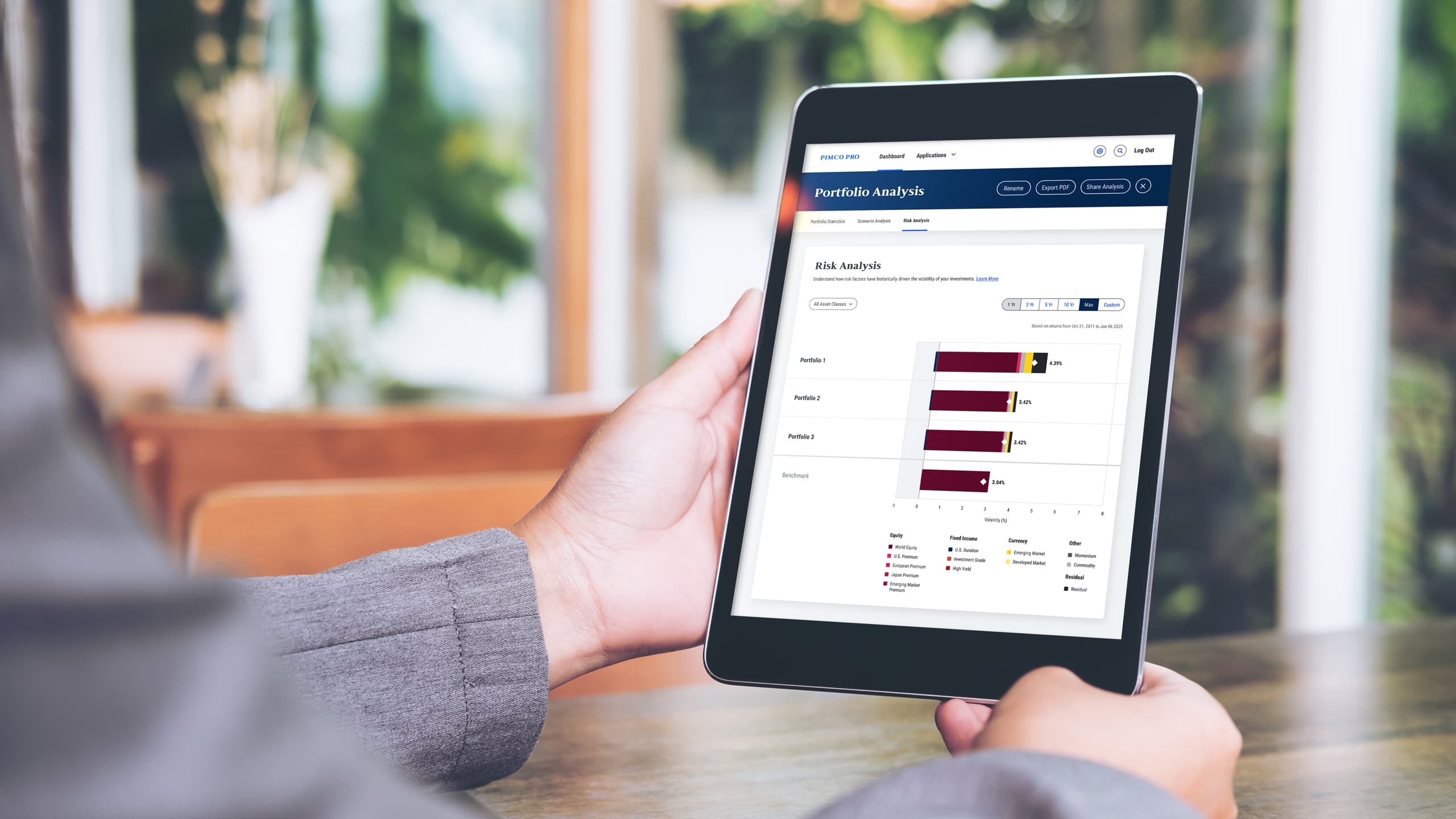PIMCO's Capabilities in Emerging Markets
Leverage our built-to-scale, tested process for informational, analytical and behavioral advantages.
This is a carousel with individual cards. Use the previous and next buttons to navigate.
Extensive Resources
Gain insight from our ability to cover this resource-intensive asset class with a global team, 24-hour coverage and strong issuer relationships.
Principle Preservation Comes First
Our team is adept at identifying micro-opportunities, instrument-by-instrument, across the full opportunity set. This helps us navigate changing macro-political environments.
Rigorous Risk Management
Aim to identify extreme events and calibrate sensitivities with our quantitative analytical models and diversification across the opportunity set.
PIMCO's Emerging Markets Platform
This is a carousel with individual cards. Use the previous and next buttons to navigate.
Scale
EM is a resource-intensive asset class where market inefficiencies favor manager size. Our dedicated specialist team is the one of the largest in the industry.
Selection
Our team works to identify potential returns from rare idiosyncrasies, and these decisions are backed by our proprietary research and scoring models.
Resilience
Rigorous quantitative research and risk analysis help us navigate volatility and seek to limit typical EM index inefficiencies.
More To Know
Access our latest portfolio insights and timely market commentary.
This is a carousel with individual cards. Use the previous and next buttons to navigate.
Learn why emerging market debt is best used to reduce risk rather than chase yields.
Pramol Dhawan,
Michael Story
Read Article
Disclosures
All investments contain risk and may lose value. Investing in foreign denominated and/or domiciled securities may involve heightened risk due to currency fluctuations, and economic and political risks, which may be enhanced in emerging markets.
There is no guarantee that these investment strategies will work under all market conditions or are appropriate for all investors and each investor should evaluate their ability to invest long-term, especially during periods of downturn in the market.
PIMCO as a general matter provides services to qualified institutions, financial intermediaries and institutional investors. Individual investors should contact their own financial professional to determine the most appropriate investment options for their financial situation. This material contains the current opinions of the manager and such opinions are subject to change without notice. This material has been distributed for informational purposes only. Information contained herein has been obtained from sources believed to be reliable, but not guaranteed. No part of this material may be reproduced in any form, or referred to in any other publication, without express written permission. PIMCO is a trademark of Allianz Asset Management of America LLC in the United States and throughout the world.
CMR2024-0314-3448367


